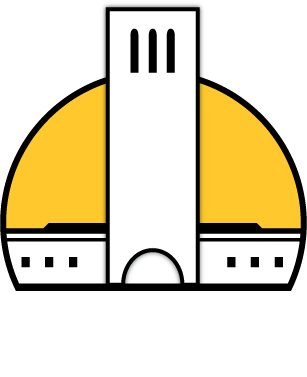Local Santa Barbara community members — including several affiliates of the nonprofit group Don’t Cage Our Oceans — delivered 2,500 petition signatures on April 5 to the local National Oceanic and Atmospheric Administration office against the 10 newly proposed aquaculture sites in the waters off of Southern California, citing significant risk of harmful environmental impact. The group also called on the Biden administration to rescind the Trump administration’s 2020 executive order under which these farms would be built.
These farms would be just some of the potential Aquaculture Opportunity Areas (AOAs) to come out of Executive Order 13921, which aims to promote aquaculture in federal waters. The order requires the Secretary of Commerce to, according to the National Oceanic and Atmospheric Administration’s (NOAA’s) official public scoping report, “identify geographic areas containing locations suitable for commercial aquaculture,” which potentially includes “finfish, shellfish, macroalgae, or multi-species aquaculture.”
Offshore finfish farming occurs in marine waters, often close to coastlines and comprising large-scale pens containing up to tens of thousands of individual fish. However, finfish farms can take on a variety of forms, from small-scale to large-scale, and can be located both close to coasts and in the open ocean. Offshore aquaculture in general has often been cited as one of the most effective tools for combating both global human hunger and biodiversity decline, yet many people still express concern at the potential for disastrous environmental consequences such as chemical pollution and marine mammal entanglement.

Red dots show selected site options (SSOs) off of Southern California coast where Aquaculture Opportunity Areas (AOAs) may be identified. (Courtesy of NOAA)
Southern California was one of the first two regions, along with the Gulf of Mexico, to identify one or more AOAs. The area being considered for these farms, referred to as the Southern California Bight, spans from Point Conception to the United States-Mexico border and includes the Channel Islands. Southern California was chosen as particularly conducive to aquaculture due to its moderate mediterranean climate, which is ideal for the success of native finfish species such as yellowtail.
Don’t Cage Our Oceans is a project of the nonprofit organization Recirculating Farms and is one of the groups which brought the petitions to NOAA headquarters. Jake Schwartz, an organizer at Don’t Cage Our Oceans, expressed concern regarding the environmental impact of offshore finfish farms in particular.
“There’s no way — throughout human history — to do [offshore finfish farming] sustainably, without pollution runoff,” Schwartz said.
“We oppose offshore finfish aquaculture,” Schwartz continued. “There’s ways to do finfish [cultivation] on land that’s sustainable, and you can also do shellfish offshore that’s sustainable, but it’s the combination of raising fish like yellowtail and tuna and having to pump antibiotics to keep them alive. That’s what makes it just inherently unsustainable.”

Don’t Cage Our Oceans organizer Jake Schwartz (center) accompanied other community members downtown on April 5 to deliver 2,500 petition signatures to local NOAA office. (Courtesy of Jake Schwartz, Don’t Cage Our Oceans)
According to Schwartz, the key difference between onshore and offshore farming is that offshore farms are not closed systems and that with currents flowing in and out of the pens, all the pollution, specifically from finfish farms, can be washed straight into the open ocean.
The pollution Schwartz is referring to is the combination of antibiotics, herbicides and pesticides that farms pump into the pens in order to keep the fish alive and kill marine ectoparasites that feed on the tissue and blood of host fish, also known as sea lice. This combination of chemicals and fish waste has the potential of escaping into open waterways: It creates a toxic “sludge” that then sinks to the bottom of the sea and mixes around in the water, which can lead to harmful algal blooms and other potentially catastrophic impacts to the ecosystem.
Another point of contention regarding the intended offshore finfish farms is the possibility of excluding commercial fishermen from the market.
“Pollution [from the farms] can actually scare off native fish … and make it harder for fishermen to catch those fish, harder for them to make a living and harder for them to price them at an affordable price,” Schwartz said.
On the other hand, California Regional Aquaculture Coordinator Diane Windham said that other wild fish may actually be attracted inland toward pens full of thriving finfish, which would be beneficial to commercial fishermen.
But according to Schwartz, the amount of fish isn’t the issue.
“Every fisherman I’ve talked to is like, ‘That is not the problem — we have more than enough fish, [but] we actually need the market to sell it to,’” he said.
Windham added that farming native species like yellowtail rather than farming nonnative ones is crucial.
“[Yellowtail] is a really promising species. It’s native, so that reduces concerns about … nonnative species in a net pen situation,” she said. “[The fact] that the farmed form is more desired from a marketing perspective [means] it’s not competing with the wild fish, so it’s good for commercial and recreational fishermen as well.”
In light of these many public anxieties, NOAA asserts that they are doing extensive research into the environmental impact in order to fully understand any potentially harmful impacts before any development is done, and they added that they have a responsibility to address all concerns the public may have.
Windham, however, says that the aquaculture industry and the science behind it has evolved considerably. She also emphasized that the industry doesn’t want to pollute the water or damage the surrounding ecosystem either.
“I will say that the offshore aquaculture industry is much more advanced than I think the general public is aware of,” Windham said. “The aquaculture industry needs healthy, clean water too. They need healthy, clean water to grow healthy, clean fish.”
The U.S. currently imports about 75-80% of its fish, 50% of which were grown in foreign aquaculture systems, which, Windham points out, might not be up to the standards the U.S. strives to meet. With our growing need to be able to feed our increasingly large population, and considering the substantial health benefits the consumption of seafood can provide, Windham stated that these new domestic aquaculture sites could be an opportunity to “shape the industry [and] to be the very best that it can be.”

A pilot kelp farm in the Santa Barbara Channel that is experimentally growing kelp for biofuel. (Courtesy of Ocean Rainforest.)
She clarified that while the conversation surrounding these AOAs tends to focus on finfish farms, potential sites are being identified for many types of aquaculture, including shellfish and macroalgae farms as well.
Additionally, she said, the proposed sites will not be on the massive scale of other global aquaculture ventures.
“I’m sure you’ve seen photos of aquaculture in other parts of the world — in Asia for example — where it’s just pens and structures as far as the eye can see. That kind of density is not what we’re hoping to accomplish in the United States,” Windham said. “You can actually grow a fair amount of protein [with] a very small footprint, so we don’t even necessarily need to go to that huge scale, especially if we’re producing for domestic supply.”
After the initial identification of potential sites, the public was able to submit comments during a “public scoping period” from May to July 2020 on points of concern regarding a variety of topics. A “Notice of Intent” provided 16 prompts covering such things as specific AOA location and parameters, chosen species for cultivation, tribal involvement, climate change and reporting requirements to which various stakeholders could respond to.
NOAA Fisheries, also known as the National Marine Fisheries Service, West Coast Region (WCR) will, according to the public scoping report, “consider all substantive information from [public] comments and supplementary information to build the content of the draft PEIS [Programmatic Environmental Impact Statement].”
The draft PEIS, set to be published in summer 2024, is compliant with the National Environmental Policy Act process and will provide a spatial analysis of the local marine areas to help determine locations with the most promise of being able to support more than one farm, as the executive order outlines, as well as other valuable information for future development.
“With the Programmatic EIS at hand, an applicant can get a familiarity with that ocean neighborhood of where they are hoping to site a farm and be better able to estimate where they have the greatest likelihood of successfully getting a permit,” Windham said. “The AOA process and [the] PEIS will give the industry more information, as well as the stakeholder community so you’re not starting from scratch, you already have a baseline of info that you can build upon with your individual project specifics.”
NOAA WCR Public Affairs Specialist Matthew Burks added that by doing this research, they are simply trying to relieve some of the planning stress of individuals that may eventually be interested in practicing aquaculture.
“[The AOAs] are not available yet, no one can apply for permits yet, but that’s really what this effort is on our end — just doing the research for people so that in the future when they want to actually perform these activities, some of the work has already been done.”
Once the draft PEIS is published in 2024, there will be another public comment period, likely lasting six weeks, during which the public can again provide feedback on the report and express any remaining concerns, which will be followed by the publication of the final PEIS and Record of Decision in summer 2025. The project is still very early in the process, and even if permitting begins soon after the PEIS publication, it can often take a few years before any development will occur.
CORRECTION [4/17/23, 7:08 p.m.]: A previous version of this article incorrectly stated that Executive Order 13921 would legalize fish farming in federal waters. This article has been corrected to reflect that the Executive Order would instead promote aquaculture of various kinds in federal waters. Additionally, the article now clarifies the fact that not only do the AOAs encompass many types of aquaculture, not just finfish farming, offshore finfish farming specifically can take on many forms, from small-scale to large scale, and can be located both near coastlines and in open ocean.















I make $100 an hour by taking risks and traveling to remote parts of the world. j17) I have been working remotely in Rome, Monte Carlo and finally Paris for the past week. I returned to the US this week. I just take simple steps from this amazing site. Check it out,
click here to copy it… http://workincome1.blogspot.com
Wow, I’ve been exploring the web for over three hours now, and among all the articles I’ve come across, yours stands out as an absolute gem! Your captivating content has truly captured my attention. In my humble opinion, if every web owner and blogger could create such mesmerizing pieces, the internet would become an incredibly powerful and enriching place like never before!
https://ehsaas-programs.pk/aiou-degree-form/
https://ehsaas-programs.pk/ehsaas-rashan-punjab-program/
https://ehsaas-programs.pk/ehsaas-emergency-program/
https://ehsaas-programs.pk/aiou-aaghi-lms-portal/
Great post! Your deep knowledge and thorough research are really impressive. I love how you make complex ideas simple and give practical examples that help me understand the topic better.
https://activators4windows.com/2022/06/04/microsoft-office-2007-activator/
https://activators4windows.com/2023/08/31/hotstar-cracked-apk/
https://activators4windows.com/2023/06/11/combo-cleaner-activation-key-free-download-with-crack/
https://activators4windows.com/2022/08/09/photoshop-cs5-crack/
https://activators4windows.com/2022/06/26/windows-7-activator-txt/
https://windows11activators.com/office-2019-activator-txt/
https://windows11activators.com/windows-7-activator-cmd-txt/
https://windows11activators.com/windows-11-activator-txt/
https://windows11activators.com/microsoft-office-2016-activator-txt-crack